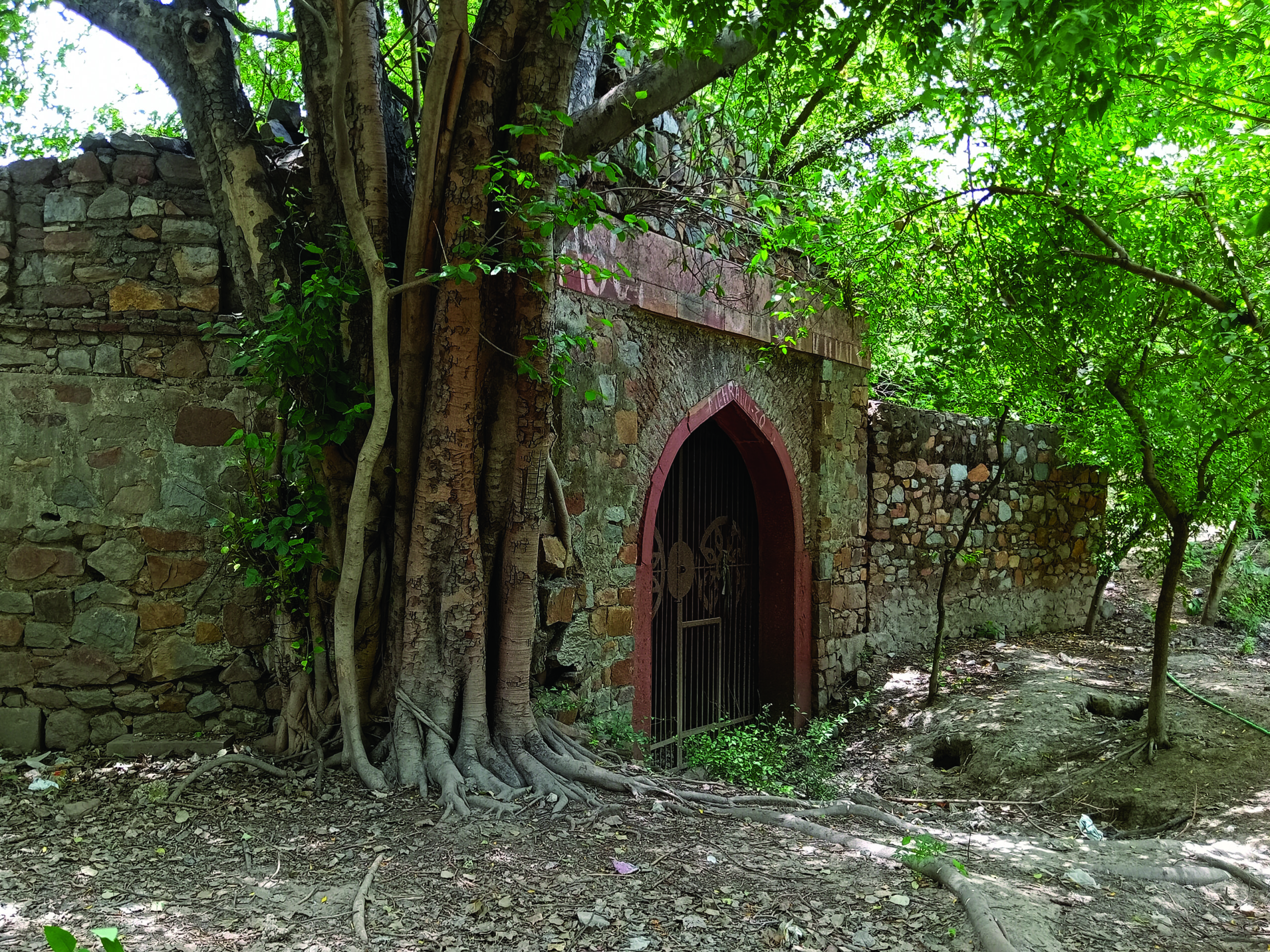The term khwajasara traces its roots back to the forts and harems of the sultans and Mughal emperors of Delhi. But perhaps in what is a testament to their everlasting contribution to the culture and history of the city, are the monuments they left behind. The Patriot visited five such monuments, which were built by the khwajasaras only to find that even their caretakers are somewhat ignorant about their contribution in the construction of these heritage buildings.
According to Rushaid Jaffery, an independent researcher and a student of history, one has the right to hide or manipulate any of the historical facts, specially when it comes to the historical legacy of a gendered minority or any other minority group.
“The impulse of hiding the contribution of a gendered minority towards building this complex has its roots in a sexist and chauvinist attitude towards history. It is probably a result of an orthodox and conservative thought process,” Jaffery told the Patriot.
“Whenever a person is appointed as a caretaker or in-charge of such a historical place or structure, the governing body must ensure that the person is completely aware about its historical significance,” he added.
While a lot of these monuments and sites have perished with the passage of time, a few still stand tall in bylanes of Delhi, evoking awe and wonder for those who care to visit them.
1. Sunehri Masjid
As one steps out at the Red Fort metro station and walks towards the Delhi Gate to the huge walls of the Lal Qila on the densely populated footpaths leading to Sunehri Masjid, which is often confused by the existence of another Sunehri Masjid at Chandni Chowk – built a few decades before the Sunehri Masjid at Red Fort by a noble, Raushan-ad-Daulah, during the reign of Mughal emperor Mohammad Shah Rangila.
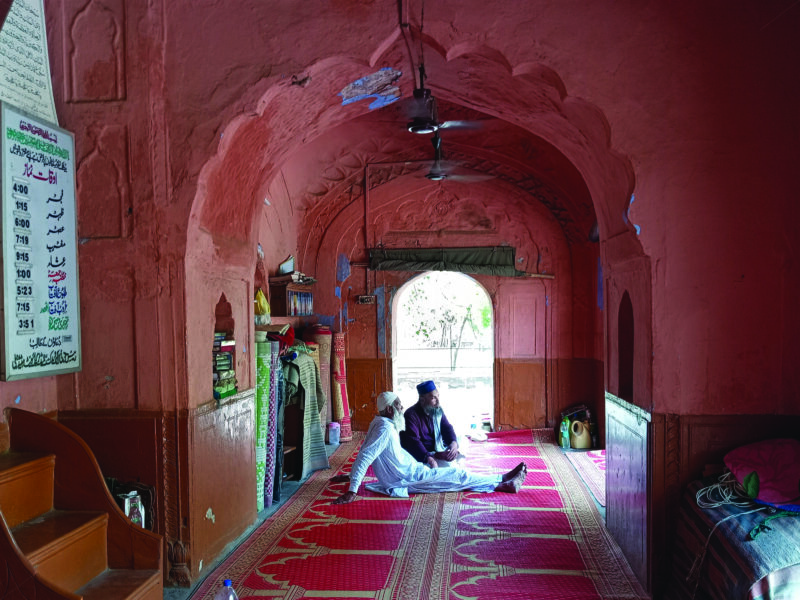
Constructed around 1747, this Sunehri Masjid stands near the Delhi Gate of Qila-e-Moallah (Red Fort). Built in the reign of emperor Mujahid-ud-Din Ahmad Shah Bahadur (1748-54) wherein it was commissioned by his mother Qudsiya Begum (Udham Bai), Sunehri Masjid at the Red Fort still stands as a result of the efforts by Jawed Khan khwajasara, as mentioned in its epitaph :
‘sayi-e-nawab-bahadur sahib-e-lutf-o-karam
saakht tameer-e-haseen jawed aali dastgaah’
(By efforts of Nawab Bahadur, the bestower of rewards and grants,
Jawed of high reach and commands, was constructed this beautiful structure)
Jawed Khan was Daroga (police chief) under Mohammad Shah Rangila and acted as a regent during the reign of his successor Ahmad Shah Bahadur. In a very small period of time, Jawed Khan of Irani origins became very dear to the Qudsia Begum, which also paved their path for being trusted with important positions in the administration.
Khan was raised to a position of commander of 6,000 troops along with being the superintendent of Diwan-e-Khas. Later, he was given command of 7,000 troops, attaining positions in the Mughal court greatly coveted by other blue-blooded nobles.
This continuous rise in positions and powers of Jawed Khan, and their increased influence over the emperor and the queen mother resulted in them being murdered by Nawab Safdar Jung, in 1752.
Sunehri Masjid, later renovated by Nawab Ahmad Bakhsh Khan of Firozpur Jhirka and then by the last Mughal emperor Bahadur Shah Zafar in 1852, stands as a living memory of a khwajasara, despite not being remembered by their name.
The people sitting inside the mosque along with the visitors were unaware of its history. As Mohammad Seraj – who calls for the daily prayers at this mosque pointed out to the grave of Nawab Qudsia Begum in the backyard “that’s all that I know,” he said in a confused tone, while looking at the face of another confused ice-cream seller sitting at the mosque’s stairs.
2. Barapullah Bridge
Standing a few hundred metres away from the Nizamuddin Railway Station exists one of the most beautiful bridges in Delhi. Barapullah literally translated as a bridge with 12 piers was built during the reign of Mughal emperor Noor-ud-Deen Salim ‘Jahangir’ by his chief eunuch, khwajasara Mehr Bano Agha (often referred as Meherban/ Minarbano Agha) in 1612 AD.
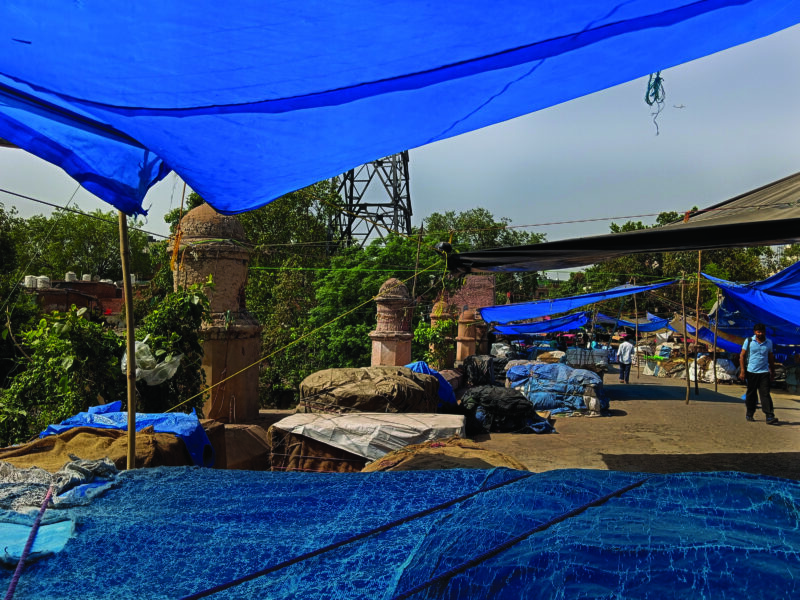
The bridge, which once was the only existing pathway that connected the Dargah of Hazrat Nizamuddin Auliya with the rest of Delhi, was mostly used by the Mughal Emperors, nobles and members of the royalty visiting the place from Agra. It is now reduced to a vegetable market.
Almost on the verge of destruction, the four-lane bridge stands as one of the most neglected heritage sites in Delhi.
3. Bazar Mehr Bano Agha
Everyone in Delhi knows about the tomb of emperor Humayun, which still stands as one of the most magnificent monuments of the Mughal era. But, few know about the other smaller monuments in the same complex. Near the entry gate of Humayun’s mausoleum stands a gateway to the Arab Sarai or the Arab ki Sarai. It was initially built to accommodate the clerics who accompanied the empress Haji Begum on the pilgrimage. Others claim that the Arab Sarai was constructed as a housing complex for the workers and craftsmen engaged in construction of the tomb.
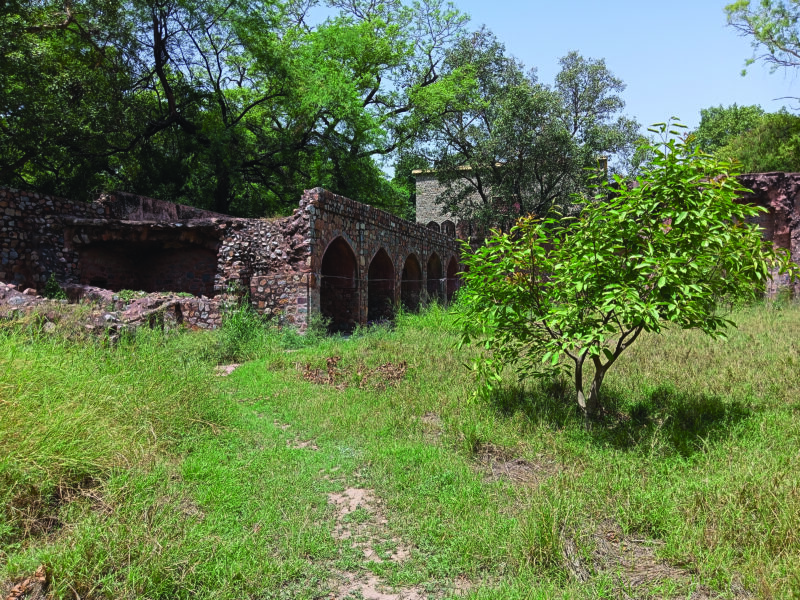
In the same Arab Sarai are the ruins of a bazaar constructed by Mehr Bano Agha, who was also the chief eunuch in Jahangir’s court. The main gate to this bazaar is in a comparatively better condition than the bazaar. The gateway has Mehr Banu’s name engraved at the top.
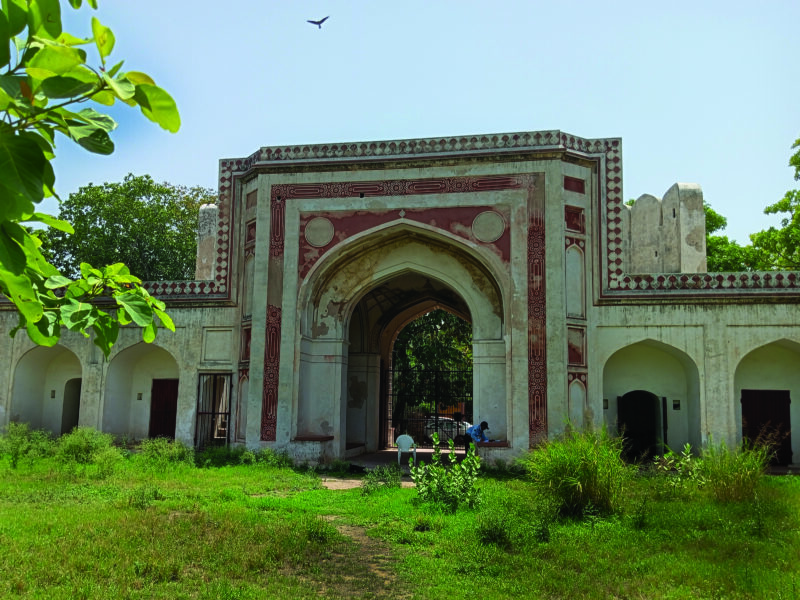
4. Bagh-e-Nazeer
As one enters the Mehrauli Archaeological Park and walks a few hundred metres ahead near the Jamali Kamali mosque, once stood a beautiful structure of red sandstone along with several small pavilions enclosed in a garden and surrounded by a stone wall — that offers a glimpse of its now lost grandeur.
Bagh-e-Nazeer, widely known as Nazeer ka Bagh or the garden of Nazeer by heritage enthusiasts, was constructed during the reign of emperor Muhammad Shah Rangila by is chief eunuch khwajasara Nazeer Khan.
The remaining parts of this garden have been taken over by a Buddhist organisation, ‘Ashoka Mission’ while its name is still etched in front of a closed gate.
5. Bawli Basti Khan Khwajasara
Largely visited by white-collar workers living in the nearby areas of Lajpat Nagar, South Extension, Greater Kailash and Kotla Mubarakpur, Baoli Basti Khan khwajasara is now known as the Jama Masjid of Defence Colony.
It was built during the reign of Sikandar Lodhi by Basti Khan khwajasara back in the year 1488 AD. One of the very few monuments from the era of the Delhi Sultanate, the complex has a mosque, a dry stepwell, a gateway and the tomb of Basti Khan khwajasara. Ironically, the Imam at the mosque is infuriated by the mention of a khwajasara as the builder of this place of worship and denies the existence of the tomb.
Many complain about the prohibition on visiting the monument. Rana Safvi, a renowned author who last visited the mosque in the year 2017, told the Patriot, “Custodians of medieval and early modern monuments like Basti Baori (another name used for the Baoli of Basti Khan) which are not listed under ASI have the responsibility of maintaining its historical character. It’s an important marker of the status of khwajasaras in the medieval age. While it’s good that it is a functioning mosque, due respect should be paid to its builder’s legacy.”
A similar situation was faced while visiting the Sunehri Masjid or the Golden Mosque at Red Fort. The muazzin (who gives the call for prayer), Muhammad Azhar was completely unaware of the contributions of Jawed Khan in the mosque’s construction. He did know that the mosque was built by Qudsia Begum who is buried in the backyard but not the whereabouts of the grave of Jawed Khan.
Thus it is clear that several other monuments built by the khwajasaras have been lost with the passage of time. It is alarming that out of just five monuments described in this piece, one has almost disappeared, while three are on the verge of ruination.
For more stories that cover the ongoings of Delhi NCR, follow us on:
Instagram: https://www.instagram.com/thepatriot_in/
Twitter: https://twitter.com/Patriot_Delhi
Facebook: https://www.facebook.com/Thepatriotnewsindia

